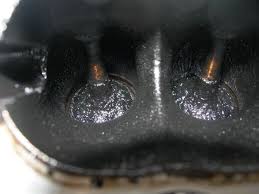Search the Community
Showing results for tags 'catch can pcv elite engineering'.
-
With all the talk about Catch Cans, we thought it would be a good idea to combine the information into a smaller thread here. To better understand the purpose of a good quality PCV Oil Catch Can and why they are important, we need to first understand the purpose of your Stock PCV System: The PCV (Positive Crankcase Ventilation) system on your engine is designed to regulate and remove fumes from the engine crankcase, and to alleviate crankcase pressure which could cause oil leaks or seal damage. It’s a way for gases to escape in a controlled manner from the crankcase of an internal combustion engine. During normal operation of an internal combustion engine, there’s a compressed air and fuel mixture inside the combustion chamber that is ignited and as a result, forces the piston down. A small amount of that ignited mixture leaks past the piston rings and ends up in the crankcase. This leakage is often referred to as “blow-by” (leakage past the piston rings), as well as oil mist. Some of the oil mist and other products settle along the engine intake and over time form a “gunk.” The oil catch can collects the oil mist and condenses the fuel vapors while allowing “cleaner” gases to be passed back into the intake. If these contaminates are kept inside the combustion chamber, they will eventually make their way into the oil inside the crankcase and cause oil contamination and dilution or make their way back into the intake manifold. This problem has been documented in many automotive magazines, Car & Driver had an article covering this topic (Carbon Deposits with Direct Injection) There are hundreds of images on the Internet of Carbon Build up on Intake Valves: http://www.gm-trucks.com/forums/topic/154204-oil-catch-can/?p=1608015 The purpose of a proper oil separating Catch Can is to route these gasses through a baffle system that provides the most contact possible with the outer surface resulting in the oil being trapped and removed from the other gasses that do continue on through the intake and are burnt and consumed. Typically the trapped oil is captured in the bottom of the Catch Can. If you do your homework, you’ll find a lot of good Catch Cans on the market. You will also find a lot of products that claim to be Catch Cans but have no internal design or baffling to create the optimum amount of pressure drop to pull the oil out of the vapor. Many Catch Cans on the market are just comprised of an empty container with 2 ports. While that simple design may trap a few oil droplets, a well-engineered Catch Can is designed to condense the oil vapor and trap the oil inside the container. As I said, there are a lot on the market, go with a company you can trust.



